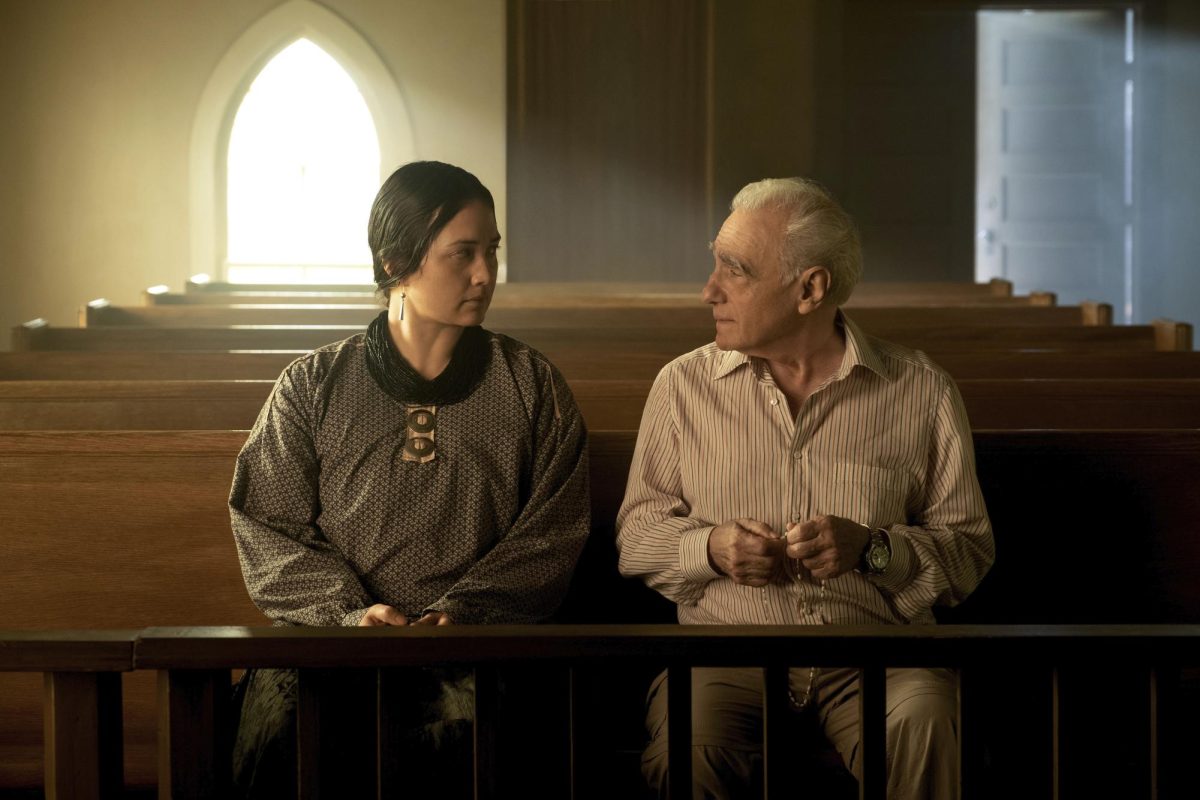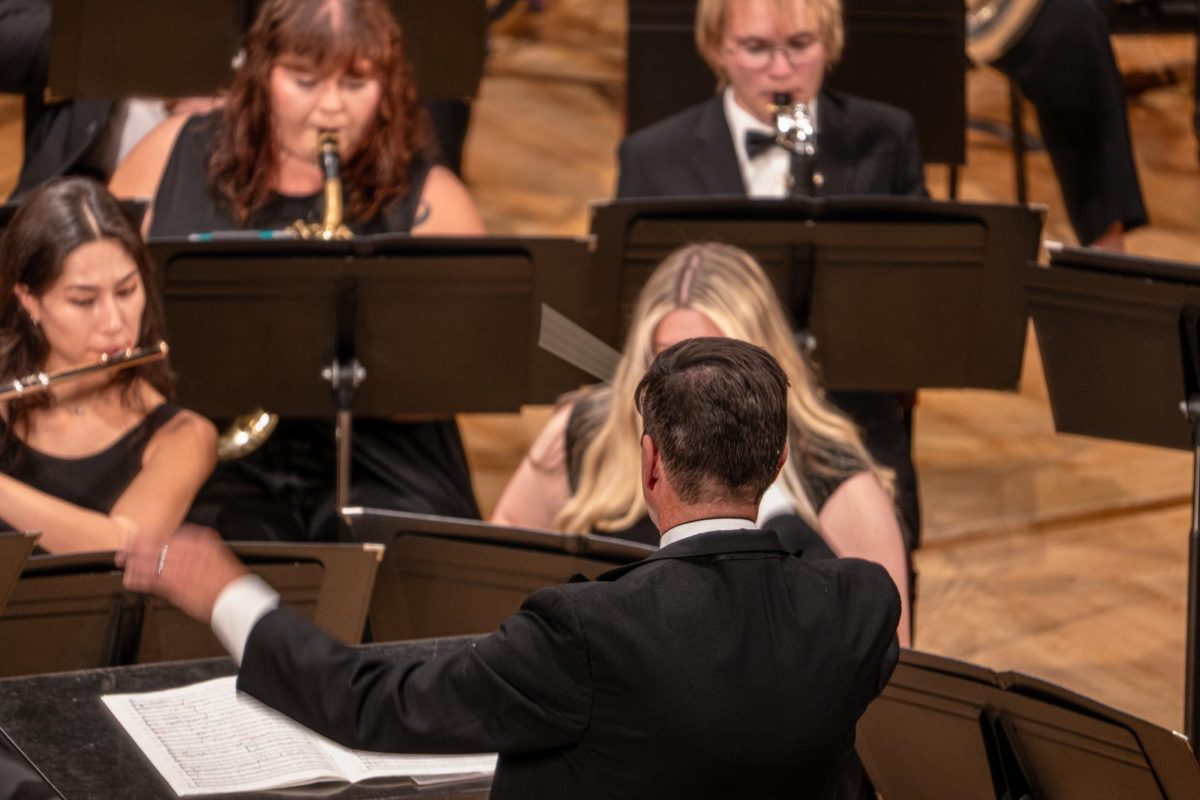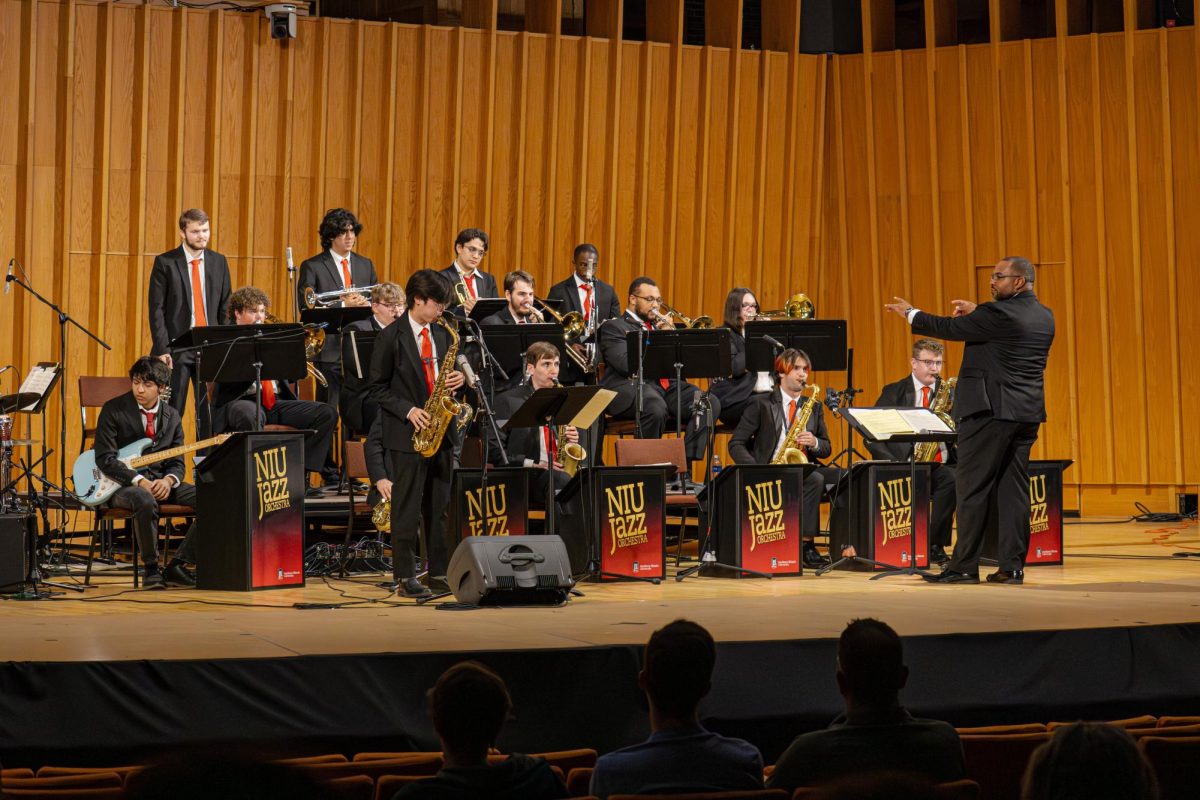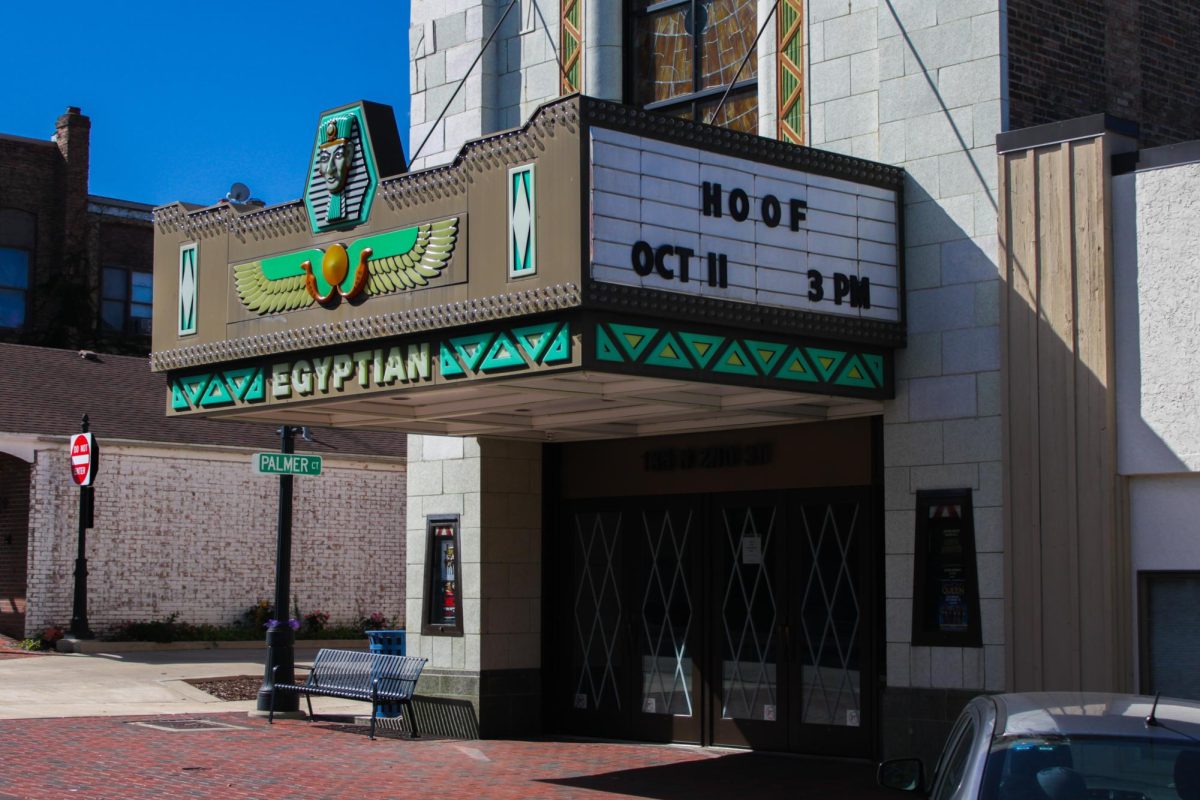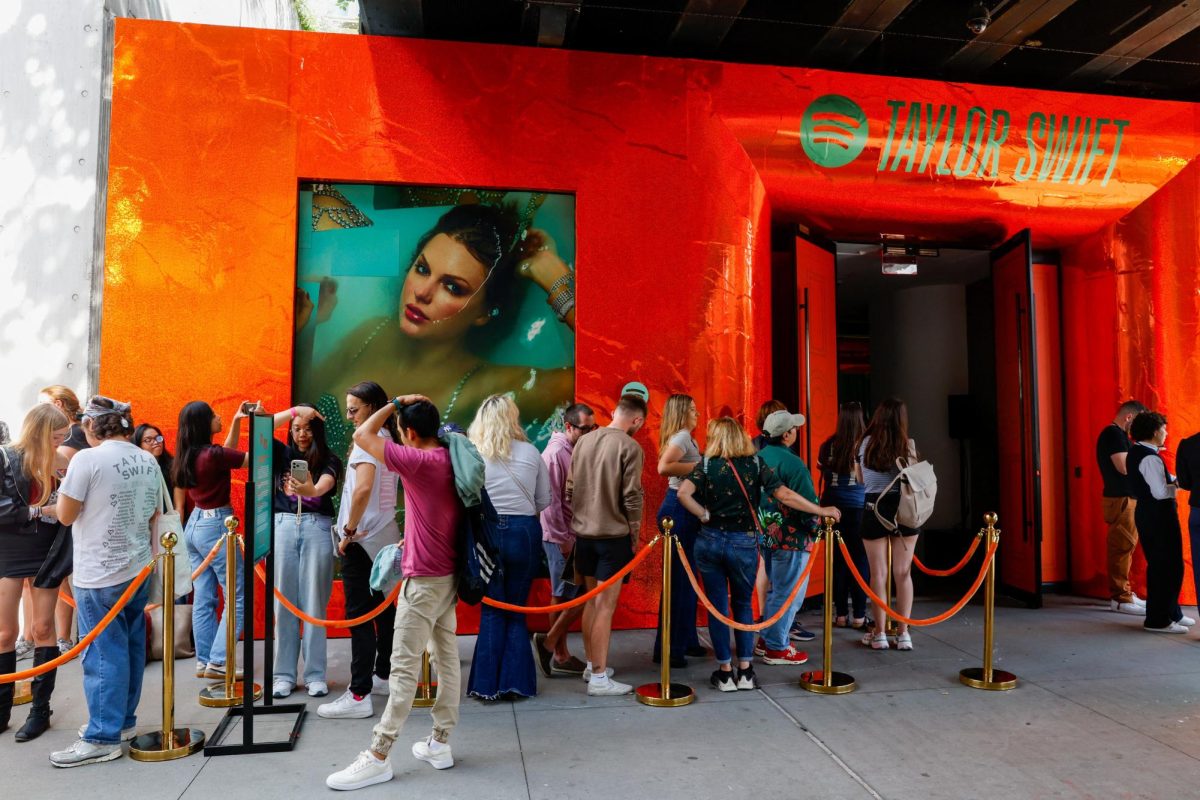“Killers of the Flower Moon” is the reason cinema exists.
The 3 hour and 26 minute long epic tells the story of the series of murders of the Osage people at the hands of William King Hale (Robert De Niro) and his nephew Ernest Burkhart (Leonardo DiCaprio).
The Osage Nation was removed from its land multiple times until the community ended up in Oklahoma, on land that was arid and dry. After finding the land was full of oil, the Osage Nation became extremely wealthy. Sensing money to steal, white people quickly started finding ways to take this money for their own.
The duo of Hale and Burkhart, joined with a revolving cast of criminals including Burkhart’s brother Byron (Scott Shepherd), hire people to murder members of the Osage Nation in order to get the rights to Osage oil money.
Hale and Burkhart slowly and methodically murder members of the Osage Nation and much of Mollie’s family.
Burkhart meets and eventually marries Mollie Kyle (Lily Gladstone), a woman from a wealthy Osage family, in a scene that can be seen as either the start of a love story or as an evil man trying to murder for money.
Directed by Martin Scorsese, the film has a thin line to walk. Scorsese is a white director who has made a career off of films arguably made for and about white people. Scorsese making a film about the series of murders of Indigenous people at the hands of white people might not be the way murders of real Native Americans should be told.
Putting his race aside, Scorsese does what he can to best tell the story. After acquiring the script in 2016, the auteur and his team, including a host of Native actors and crew members, built the story up. After a massive rewrite to the script – which originally resembled the segmented structure of the book the story is based on – and changes in roles, the film started to take form.
After the COVID-19 pandemic, filming started on the movie. The Osage people were hired to help in every step of the production. Many of the costumes were made by Osage people, a lot of the extras were Osage – as well as standout performances by Everett Waller and Yancey Red Corn – and, when the film was screened at Cannes, Osage Chief Standing Bear was part of the press conference.
On top of that, Scorsese brought in people who weren’t afraid to criticize him, his whiteness or the film. One of the major interviews that came out leading up to the film was that of Christopher Cote, an Osage Nation language consultant for the film.
“As an Osage, I really wanted this to be from the perspective of Mollie and what her family experienced, but I think it would take an Osage to do that,” Cote said to The Hollywood Reporter. “Martin Scorsese, not being Osage, I think he did a great job representing our people, but this history is being told almost from the perspective of Ernest Burkhart, and they kind of give him this conscience, and they kind of depict that there’s love, but when someone conspires to murder your entire family, that’s not love.”
The film is hard to wrap your mind around, part true crime, part relationship drama, part gangster film and part historical narrative. The massive run time is no piece of cake either. Yeah, it doesn’t feel like three and a half hours, but it still feels giant and grueling to get through.
Long-time collaborators Rodrigo Prieto’s cinematography and the legendary Thelma Schoonmaker’s editing are phenomenal and to be expected in a Scorsese film from this century. The late Robbie Robertson’s compositions push the movie forward, part of the energy that makes the runtime handleable. The surrounding cast with great performances from many modern country legends like Sturgill Simpson and Jason Isbell is highlighted by John Lithgow’s Prosecutor Peter Leaward and Jesse Plemons’ Tom White, a role originally meant for DiCaprio himself.
More than anything though, this film centers the relationship between Mollie and Ernest Burkhart. While DiCaprio’s Burkhart is stellar, it is a bit too over the top for this film – though it still deserves a Best Actor nomination at minimum. That being said, Gladstone’s Mollie is quite possibly the best performance in a film of the century so far. Yeah, she’s that good.
Gladstone’s subtly is phenomenal, offering only what the scene needs, never going above or over the top. Sharing the screen with two of the biggest actors of her generation, DiCaprio and De Niro, Gladstone is always the star. She stands out in a movie full of large and grandiose performances – Letterboxd and X users alike are all ranting about Brendan Fraser’s lawyerly ranting.
When Gladstone does break in a scene, it’s haunting. Not to spoil the 100-year-old story, but when Ernest looked down the stairs at Mollie about two hours into the movie, and Gladstone screamed for the first time, the theater went quiet – even the guy in front of me who was lying across four separate seats sat up and put his phone away. It was her “Oscar moment.”
On top of this, Gladstone is able to draw out the main question the story has – a question Scorsese seems to have not been able to answer in his years of work on the film: Was there love between Ernest and Mollie?
Gladstone, with a simple laugh or a tiny upturn of her lips after a DiCaprio quip, makes it clear that there is some form of tenderness there. Still, the last scene of the narrative – outside of the two final scenes of the movie – leaves that question up in the air. As Gladstone walked out of the room after a confrontation with DiCaprio’s Ernest, she repeated a question to him. Her delivery, flat and inquisitive, doesn’t give up any hints.
The real-life couple’s divorce is revealed in the next scene, and, with an appearance by the great director Marty himself, the most heartbreaking moment from cinema in a long time followed. Revealing the whole story as part of a radio show, a la Prairie Home Companion, Scorsese takes the stage of the show and reads Mollie Kyle’s – no longer taking Burkhart’s name – obituary. After this, he adds in just one sentence of his own: “There was no mention of the murders.”
Real spoilers come in here. The scene cuts away from the frame narrative. One final shot.
The camera looks down on a group of men beating a drum. Around them dance members of the Osage Nation. This circle is not colored or faded like the rest of the film, instead insisting the viewer acknowledge that the Osage people are still here, and they are still dancing.
As the drum beats on, the camera lifts, and more and more Osage people come into view.
They dance on, and the camera fades to black.


